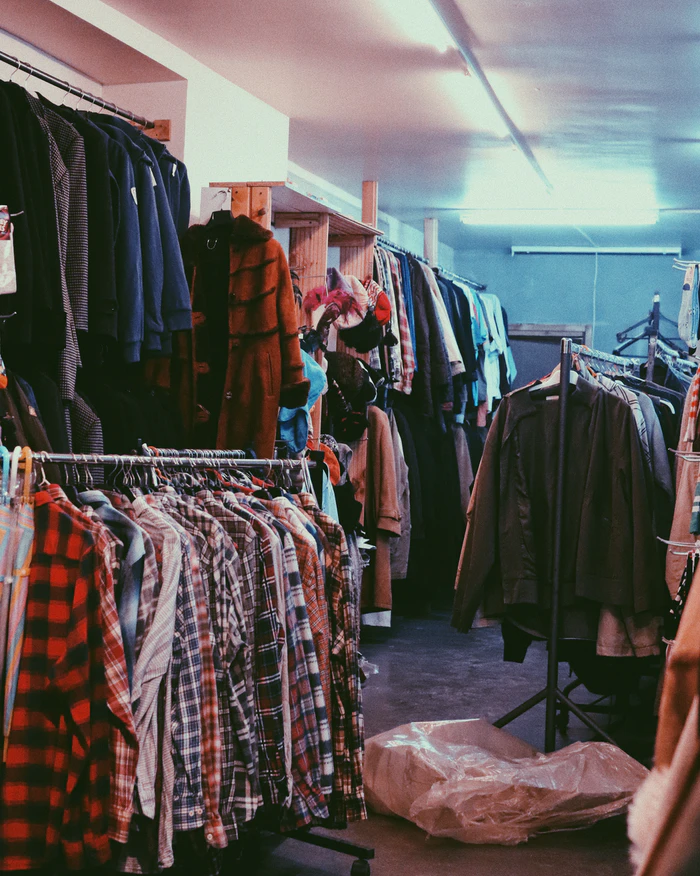While the popularity of thrift stores can be dated back to the Great Depression, it is not a surprise that these stores that sell used items in really good condition are gaining recognition even today when we are facing the wrath of global economic fall and the pandemic.
According to ThredUp, a resale marketplace, this market is expected to be worth $64 billion within the next five years.
But even if we keep these factors aside there are a number of benefits associated with starting a thrift store:
- In the long run, it is really great for the environment as the clothes are not thrown away but are reused by other people who need them or wanted them but couldn’t afford them because of the high price tag.
- Even if the whole market is collapsing around you, having a Thrift Store means more footfall for you.
- Since you don’t have to pay any manufacturer or brand for your stocks, you can get them at prices that are almost always negotiable
- You don’t really have to worry about getting a lot of stocks from one place as you can always get them from multiple sources.
And at a time when more and more businesses are moving to the Internet to keep themselves afloat, Online Thrift Stores get an added advantage like :
- Using Social Media Marketplaces to sell items
- Using existing E-commerce platforms to sell, reaching an even wider audience
- Have online exclusive drops on your social media platforms for some bigger brands to create buzz
- Since statistically, Gen Z is more into thrifting, you get a certain idea of your target audience beforehand.
But opening a Thrift Store can be a daunting task. Where do you find clothes from? How exactly do you reach people to sell? How can one actually ship these products? These are some common questions that can haunt those just beginning this out and do not have much of an idea. So, we have made the process of opening an online Thrift Store easier by listing down the 10 things you need to do to start your online thrift store.
Table of Contents
1. Choosing your Target Audience

So before we can jump right in and talk about the products, there are a bunch of questions you must ask yourself when you are just beginning out in a market that is booming by the day. The first one, and the one we will discuss here is, ‘Who are you selling your product to?’
While it may be a seemingly simple question, when you think about it, you would find that consumers are of varied range and taste. While I like to roam around in simple graphic t-shirts of solid colours, some guys like to get their t-shirts printed, some others wear graphical t-shirts, and some don’t prefer to wear t-shirts and go for shirts or even kurtas.
Even and especially at the beginning, you must know that if you try to go for every kind of taste, you might not be able to create a unique store that sells exceptional products. So you must answer the question to its last bit of detail. And when you have answered that question and selected your target audience, let’s say, a clothing store for movie and tv show fanatics, you have made your store unique and now you know what kind of products you need to get your hands on.
2. Choosing the products you want to sell

While this might come off as a similar question but it is vastly different from the one we just answered.
Let’s say we now have this idea of the clothing store we want to make for movie/tv fans. My next question to myself should be what exactly should I sell to them that will attract towards my store.
The best option I have is to go according to a season in this case bringing in a little more exclusivity but still a range that can give a certain variety to the people. So I get the option of selling t-shirts, shorts and other summer wear that I can get my hands on, which narrows down our brand even further and gives us a little more clarity to jump to other important questions.
3. Research

Currently, the internet, social media specifically, is booming with thrift stores and while it can be a little disheartening at first, it’s actually a really great thing if you take into consideration the fact that you don’t have to scout around physically to find the price and the products doing the rounds in the stores similar to yours but those are not the only things you should really research about.
You also need to take into consideration a lot of other factors like the appeal, marketing strategy of these stores, their stock sources etc, all of which we would discuss in detail in the next coming steps, but before you make your own decision in these matters you should know what the competition is offering.
Not only does that allow you to make an informed choice but also gives you an option or an opportunity to have a slight edge over them in one of these aspects, and that is more than what you require while setting up your thrift store.
4. Finding stable sources

So now that you have a fair amount of idea about your competition out there, you need to start getting a hold of the items that you want to sell in your store. And for that, the next question that you should be asking is, ‘Where can you actually find these products?’ Well to answer that we need to gain some more insight about thrift stores and different categories can they be placed into:
Chain Thrift Stores
As the name suggests, these are large nationwide chains that specialize in this business and are aiming to dive deep into it so as to make more and more money, but the best part about these chains is that they also offer products at a very cheap price, sometimes even throwaway prices, and you can get a good deal from them if your timing is just right. You can buy products from these chains and sell them in your own online store. And if the demand for these products increases you can even set a price higher than what you paid to get the product.
Garage Sales
A lot of us have heard of these but have probably never been to one. A garage sale is one where a person holds a sale of all the products he/she might not be using anymore. The best thing about these sales is that more often than not the prices here are negotiable and if the product is in a good condition you can get a decent price for it with a considerable amount of margin for yourself.
Resale Shops
These are the shops where people go and sell their old items in exchange for money and they are a great place to shop especially if you have an eye for antique or rare items. The prices here are can also be negotiated and you also can get a wide range of items as per your need.
Local Thrift Stores
Small shops that get into a business of thrifting often give items for a very low price and while you will need to do a lot of sorting out here, you can get a wide range of things depending on the specific store. If you have a number of these stores around you, you’re in luck.
Flea Markets
If you have one of those around you, this should always be your go-place to find your products. It is a market where a number of vendors sell second-hand or used products at throwaway prices. The added advantage in these markets is that you can get one item or similar items at different prices. While they are not always in such a good condition, if you’re lucky you might just grab yourself a good deal.
If you can somehow find some reliable option amongst these you should always be looking out for more stock, and while you might not need to have a load of stock with you always, you should have items to go back to at all times so that you never run out of products which is why you must find sources that are reliable, offer you the products you’re looking for, and do not cost you a lot of bucks.
5. Choosing your marketplace

Let’s say you have figured out all of the above questions perfectly and have come up with a target audience you can reach with your products that are in good condition, are decently priced and are enough to compete with similar brands of your competitors, what you need to know next is where you are going to sell.
While you might have something in mind already, like a social media page or website, you should know there are merits and demerits to both of these attached when it comes to opening an online thrift store. So let me simplify it for you by discussing either further and talking about their pros and cons:
- Website – The first option that could come into anyone’s minds is to get an E-commerce website that showcases your products nicely while giving a nice edge to your store over others who might just be offline or social media-oriented. A website can make you seem professional regarding your business and with the right products, pricing and marketing can take your store to a different level and in no time you will find your business even getting recognition from overseas, but having talked about the pros of a website we must not forget about the cons of it:
Advantages
- Reaches a wider audience
- More professional than a social media marketplace
Disadvantages
- Requires constant maintenance/hosting costs
- Only helps if you already have a marketing strategy in place
- Social Media Marketplace – In recent times, websites like Facebook and Instagram have also become a hub of business. Small entrepreneurs use their tools and features to gain a steady audience and sell their products and adapt according to the audience response. These mediums also help you reach your audience directly as they interact directly with the user and reach their feed which can bring them to your store and probably introduce them to their products. This too brings a certain number of advantages and disadvantages
Advantages
- Reaches the preferred target audience easily
- Has low impact on the pocket
Disadvantages
- Not a great option if you want to reach a large number of people
- Does not always help a large scale business
- Existing E-commerce marketplace – Another great option to sell used items is to become a seller on big E-commerce websites like Amazon and sell your products through that. While this option might not be available for everyone depending on their region, these websites can get you a good price if your products are of good quality and you can package them in a short period. Since these big websites work under certain delivery timelines, you will need to adjust accordingly.
Advantages
- You need not worry about shipping
- These sites can place your store as a dependable one
- Customers generally provide feedback on these sites which is good for your store
Disadvantages
- You will have to work under time constraints
- A good amount of stocks are needed
6. Clicking your products right

If there is one step you absolutely cannot get wrong, it is this. Even if you see for yourself, you might like one item in one place but would not feel the same way about the same item you see at a different online store. Why is that? That is because of the product photography that changes how your audience views your product and how high of a chance your product has of them captivating them in the first look.
For example, if you’re willing to sell a table lamp, it would help to have multiple images of that lamp against different backgrounds and on different bases than just showing the product on a white background.
This helps the audience to get more perspective as to how the product would look in their hands and if it suits their needs which can help you in selling the product slightly better, at least. It is also great in the long run as it makes your audience think of your store as a reliable one.
7. Pricing

Now we have almost everything ready for us and we need to work on the finer details that will finalise this process, and setting the right price for your product is the first and an important part of this process. And this is where your research will come in really handy!
Pricing can be complicated for a number of reasons as there are some things you absolutely cannot ignore while setting your product price, and that includes everything we have discussed so far and a few things we will discuss in the next few sections.
The priority here is to cover your basic costs at all times, make enough profit to keep the business afloat and still keep the prices as low as possible. This is what makes this process so complex and important. Here’s what you should remember while setting the price right to meet the mentioned criteria:
- Since you have already researched the prices of other similar stores, you should be able to have a fair idea of how much people are willing to pay for what kind of quality.
- You should have the right idea of your own product, how rare or valuable it is and then price it according to how much you would be willing to pay for it, had you seen it on a thrift store.
- Before setting the price, know how much you will be spending on the packaging of each item. While it might not seem like a big deal at first but as you sell more items this cost will be unignorable.
- Although we’ll discuss it later on, it is hard to not consider shipping while pricing your product. If the product price is exclusive of the shipping charge, you cannot really expect to sell the product for a very high price. If, on the other hand, the price is all-inclusive, you should be able to cover the shipping cost.
- A good idea to know how much people will be willing to pay for a certain product is by directly asking people around you about it. You can always go to your family and friends for this. This will not just tell you the average value of your product but would also be a feedback on the quality of the items you’ve been able to get.
8. Finding out Shipping methods

This is probably one thing about opening an online store that can be very tedious and tiring but it cannot be ignored, can it? After having a fair amount of idea about your product you need to know how you will make the product reach your customers, that too in a manner that is quick, safe and not too heavy on your pocket.
These are the things you should keep in mind while you are considering different shipping methods:
- You need to have the exact idea or at least an upper cap of how much shipping would cost you
- You should also be aware of how the shipping price would be affected in case you need to send out multiple deliveries, or even a bulk of them, at once.
- Shipping companies usually have different price brackets for different kind of deliveries, i.e. more money for faster deliveries and you should know all about those so you can offer something similar to your customers as well.
- Packaging is something that is as important as pricing when it comes to shipping because if the product reaches the destination in a bad condition, people would not be as much disappointed in the delivery service as they would be in yours.
A big concern today, in the pandemic and post-pandemic world, is whether or not the product follows the health protocols need to ensure the product is safe from any kind of contamination, and that should also be checked thoroughly.
After going through all of these you might land on a courier service that provides almost all of these things and doesn’t affect your budget too heavily and you should stick with it to maintain your average shipping costs, but if you haven’t been able to find yourself
9. Sorting out policies
This is one place where a lot of stores lose their customers and are often even tagged as ‘fake’, ‘dubious’, or ‘suspicious’, since they do not have the correct policies in order to rectify if the order that is delivered is either not up to the quality they had expected or seen, or because it has been damaged in the process of shipping.
It is especially because of these reasons that you must have certain return and refund policies intact. On the off chances that the product might not have been delivered or retrieved in the same way you had expected.
It must be noted that while setting these policies up you must always remember that it is the customer who is the topmost priority for your business, in the current time and even in the future. One bad review can cause a lot of devastation to your online store in the long run and may not be perceived that positively. Hence, it is advisable that you keep the following things in mind while setting your store up:
- Craft out a return method – While not all delivery partners might help you out in this, if you can make it happen without causing a major dent in your own costs, it is bliss for the customer. A damaged product being returned in a hassle-free manner is what everyone needs and is also the reason why the big conglomerates work so well.
Another possibility is that you ask the customer to return the product on their own and slash their delivery price off of the product. While this will most certainly not be beneficial for your store and your budget initially, it will have a major impact on your service
Refund methods – A lot of times, your customers might not be satisfied at all with the product received and they would want to return it in place of simply exchanging the product with one of better quality. While other times you might not have the same product or a similar one in stock.
This is where your refund policy would come in handy. Not only would it help in attracting a lot of customers who want that kind of reliability from any store but it will also help you in garnering positive reviews from your customer if you can positively return their payments for the product if the demand is not adequately met.
10. Marketing

Thus far we have almost covered everything when it comes to starting your online thrift store. And while all this could seem like doable tasks and you feel like you’re ready to start it anytime soon, Marketing your brand right comes off as a task that not very many stores are good at. As a reason of which they fail at making a good amount of profit from their products.
So while you need to know the right worth of your products, you should also know that your brand or the store also carries a certain worth, which is decided and complemented by the kind of marketing you do.
Marketing can also be divided into a number of categories and all of these kinds completely depend on individual budget and your target audience and is not something you should absolutely stick by, but something that would help :
- Social media boosts – So as social media marketplaces have started to emerge and rival E-commerce websites, they have really taken the game to the next level by the kind of boosts they offer to individual accounts. These are paid on all platforms and give the small scale stores an option to appear on social media feeds of users that have shared a similar interest.
Advantages
- Much Cheaper than other marketing alternatives
- Helps if the target audience is active on social media
Disadvantages
- Limited mostly by time, i.e. the business is boosted for certain hours based on the amount paid.
- SEO – Search Engine Optimization or SEO helps mostly on a website basically by adapting to the algorithms of the famous search engines which are most common amongst them, and placing your website higher on certain kinds of search.
A lot of famous website builders like Squarespace, Wix and WordPress offer a great SEO that optimizes your site accordingly and that will give you a huge boost to your store when it comes to people who are more dependent on Google and Yahoo than a social media platform. It takes these customers directly to your website so that they can shop to their brim and you can enjoy its benefits. - Collaborations with Influencers – While this is not such a common practice but is gaining widespread popularity with the advent of influencers on platforms like Instagram where people follow certain individuals who are good at fashion, modelling, etc, but not limited to just that always.
If your target audience is the youth, collaborations can be a great way to reach them and make them see your store/brand. You can also take the help of influencers to promote certain products from your store that they can, in turn, promote and make people follow your store and buy from it.
So, we have covered all the steps involved in the process of starting your online thrift store, a market that is expected to only increase from here on out. It might have been a bit overwhelming for you considering the number of steps involved but if you know the ins and outs of all the factors described above, you are surely going to sell a lot of products in the time to come.
But, if it is still a little bit complex, let us summarise the process for you in the 10 easy steps that you can follow:
- Choosing Target Audience
- Choosing the product you want to sell
- Research
- Finding stable sources
- Choosing your marketplace
- Clicking your Products right
- Pricing
- Finding Shipping methods
- Sorting out policies
- Marketing
